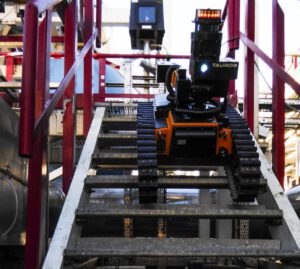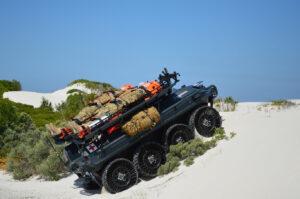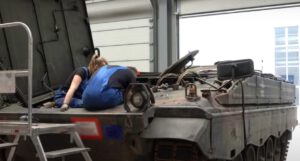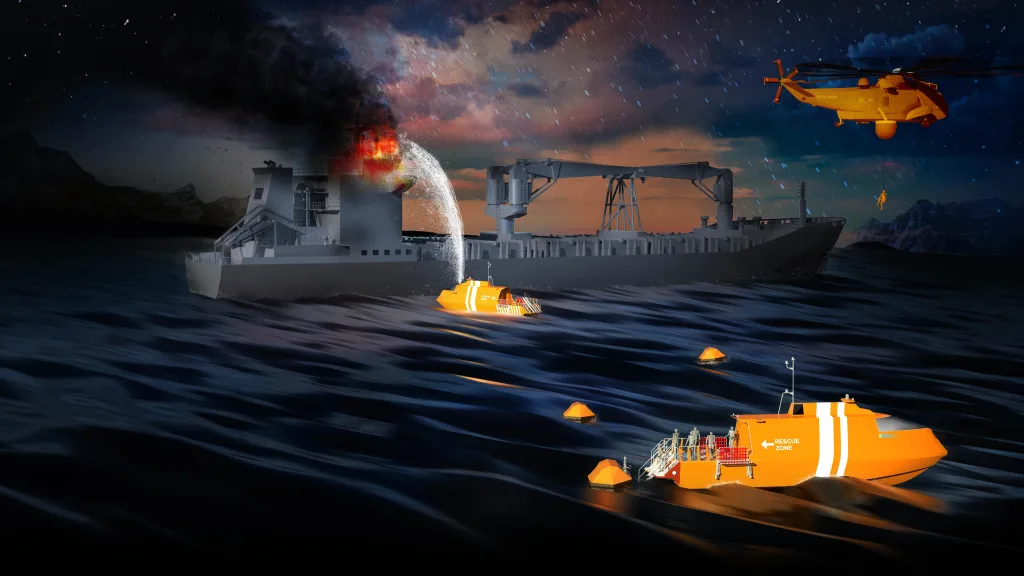
A new-generation rescue craft proposed by Saab’s Docksta Shipyard would use remote-operation technology to dramatically cut response times for maritime accidents. The design minimizes ice-building – a game changer for rescue missions in Canada’s Artic region.
The world’s oceans are truly vast spaces.
When an ocean-going vessel like a deep-sea fishing trawler or a research craft runs
into trouble hundreds of kilometres from shore,
it can take many hours – even days – for meaningful help to arrive on the scene.
But what if an uncrewed rescue craft could be more or less permanently stationed on remote areas of the ocean, ready to speed to emergencies?
Could it help save lives at sea and enable maritime nations to better meet their
search and rescue obligations?
Docksta Loitering Optionally Crewed High Speed Rescue Vessel
This line of thinking recently inspired staff at Saab’s Docksta Shipyard to develop a concept for a new generation of rescue craft capable of being operated remotely and remaining at sea for weeks at a time. Known as the Docksta Loitering, Optionally Crewed, High Speed Rescue Vessel (LHSRV), the proposed vessel could potentially travel at speeds in excess of 40 knots to maritime emergencies to provide a safe evacuation point for up to 20 survivors at a time.
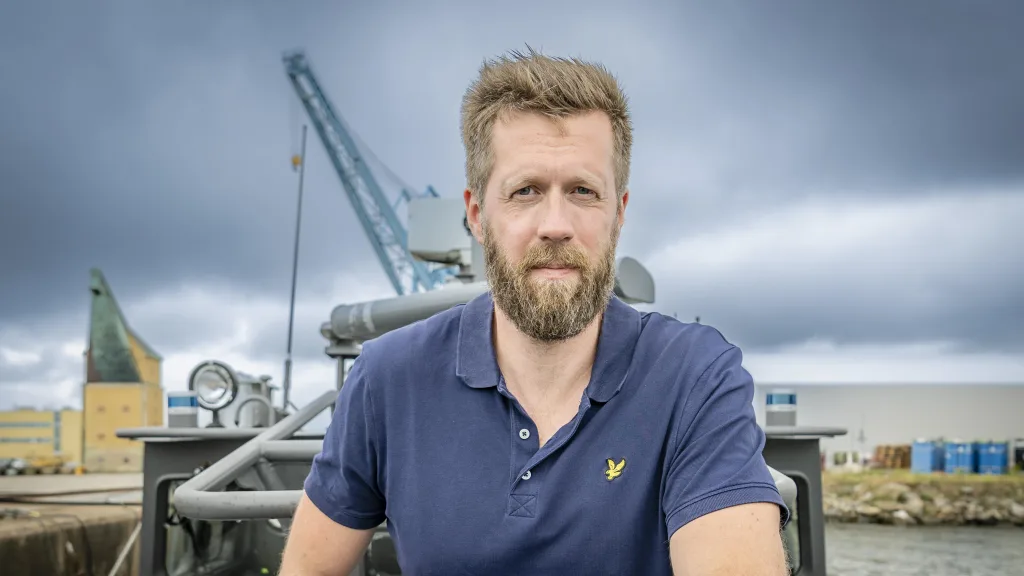
The concept was recently unveiled to the shipping and rescue communities by Saab’s Emil Jonze at the World Maritime Rescue Congress and the Royal Institution of Naval Architects 11th instalment of the Surveillance, Search and Rescue Craft (SURV) Conference in Rotterdam. Audiences heard that one potential application for the craft is in the oceans around Canada, where accidents frequently occur in cold waters more than 100 nautical miles from shore. The LHRSV has been developed in cooperation with John Dalziel and Ron Pelot from Dalhousie University, Halifax, Canada.
Enhanced rescue response
The starting point for the development of the LHSRV’s concept was understanding the limitations of current rescue resources for remote ocean emergencies.
Under the International Convention for Safety of Life at Sea, national governments are required to operate and maintain search and rescue facilities within their designated rescue zones.
Crewed ships can be used for such rescues, but they are expensive to maintain on station, relatively slow and affected by heavy weather. Fixed wing aircraft have limited time on station and rescue capabilities, while helicopters have severe limits on their range, time on scene and survivor capacity.
Robust design with features to enhance long range and withstand cold water
The proposed features of the LHSRV would allow it to overcome many of these challenges, and to work in cooperation with conventional search and rescue platforms. Measuring 20 metres, the concept vessel’s hull would be based on Saab’s successful Docksta 20 Interceptor craft, currently used in patrol.
Constructed from aluminium, the LHSRV would feature a self-righting design to allow it to quickly recover from capsizes and to survive rough seas. A superstructure designed to minimise ice build-up would allow for operation in cold water environments, such as the North Atlantic.
Meanwhile, a substantial battery system capable of being recharged by both a generator and photovoltaic cells would enable the craft to remain on station in the remote ocean for periods of between five and 20 weeks, depending on conditions. The range for rescue missions would be up to 300 nautical miles on top of loitering time, with the vessel able to travel 200 nautical miles or more to reach its station.
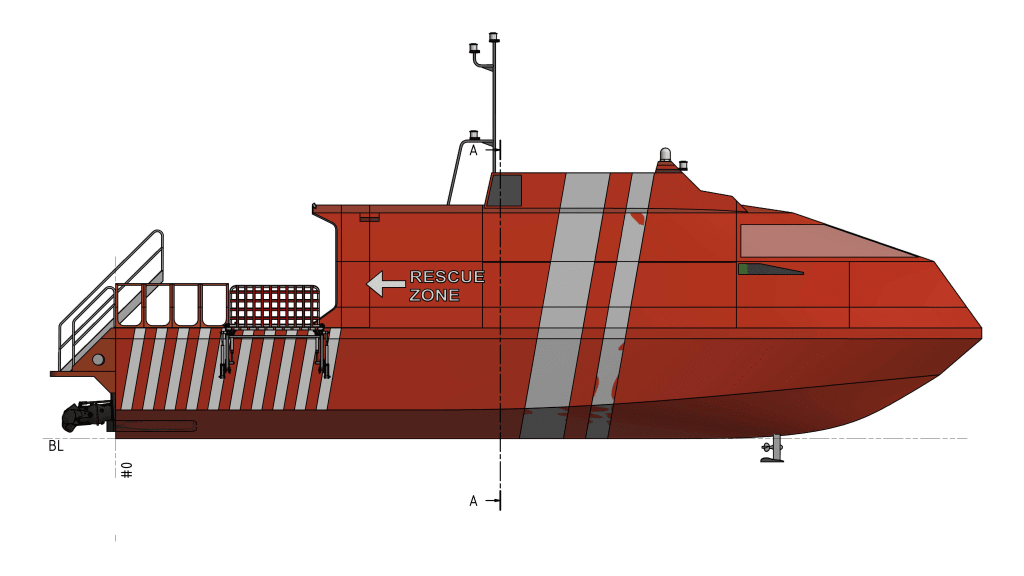
Fully remote operation
The LHSRV would make use of cutting-edge autonomous and remote-operation technologies, some of which have been demonstrated Saab’s Enforcer III test craft. These would allow it to be controlled entirely remotely from a control room on land. With no crew on board, the craft could achieve speeds in high seas that no equivalent crewed vessel could manage.
Once at the scene of an accident or incident, the LHSRV could potentially serve a number of functions. Remote communications features would allow it to act as a communication hub and to interact with the crew of stricken vessels. A remotely operated man-overboard system would allow it to retrieve survivors already in the water and receive evacuees from sinking vessels. The LHSRV could then potentially convey survivors to shore or stay on the scene until other resources arrive.
Cover and Article Images Courtesy of SAAB
‘Copyright Saab AB’
The photo in the article depicts Emil Jonze, who has recently presented the LHSRV concept at the World Maritime Rescue Congress in Rotterdam from Saab’s Docksta Shipyard

